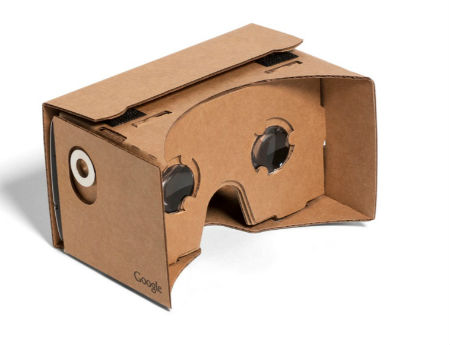Google Building Next-Gen VR Headsets: Report

Apparently happy with the consumer response to its inexpensive Cardboard virtual reality viewer and pursuing the next leg in its VR strategy, Google is reportedly pushing ahead with a next-gen, self-contained VR headset that won’t require users to pair it to a smartphone, game console, or a high-octane PC.
Google, which recently tapped company vet Clay Bavor to head up its VR team, is also preparing to release a more advanced version of its entry-level Cardboard viewer later this year that will be made of plastic, but will still need to be paired to a smartphone, according to The Wall Street Journal. That offering, The Financial Times reported earlier, will be similar to the Oculus-powered Samsung Gear VR headset, which is compatible with certain Samsung smartphone models (here’s our review of that platform).
But Google’s purported plans for a self-contained offering would seemingly take aim at high-end VR platforms such as the Oculus Rift and HTC Vive, which will be required to be linked to powerful PCs. An Oculus Rift bundle is available for preorder starting at $599 and will start shipping in the spring; preorders for the HTC Vive are expected to begin on February 29. Sony, meanwhile, is expected to launch the PlayStation VR, a headset that will work in tandem with the popular PlayStation 4 gaming console, later this year.
Google hasn’t announced plans for what’s coming after Cardboard. Word of those plans could come at its I/O developer’s conference in May. The WSJ said the timing of the release of Google’s new self-contained VR headset isn’t clear, but that Google could use I/O to unveil its more advanced smartphone-based VR viewer.
Speaking on the company’s earnings call earlier this month, Google CEO Sundar Pichai said Cardboard “is just the first step,” in its VR strategy, noting that more than 5 million of the inexpensive viewers had been shipped so far.
The smarter way to stay on top of the multichannel video marketplace. Sign up below.
